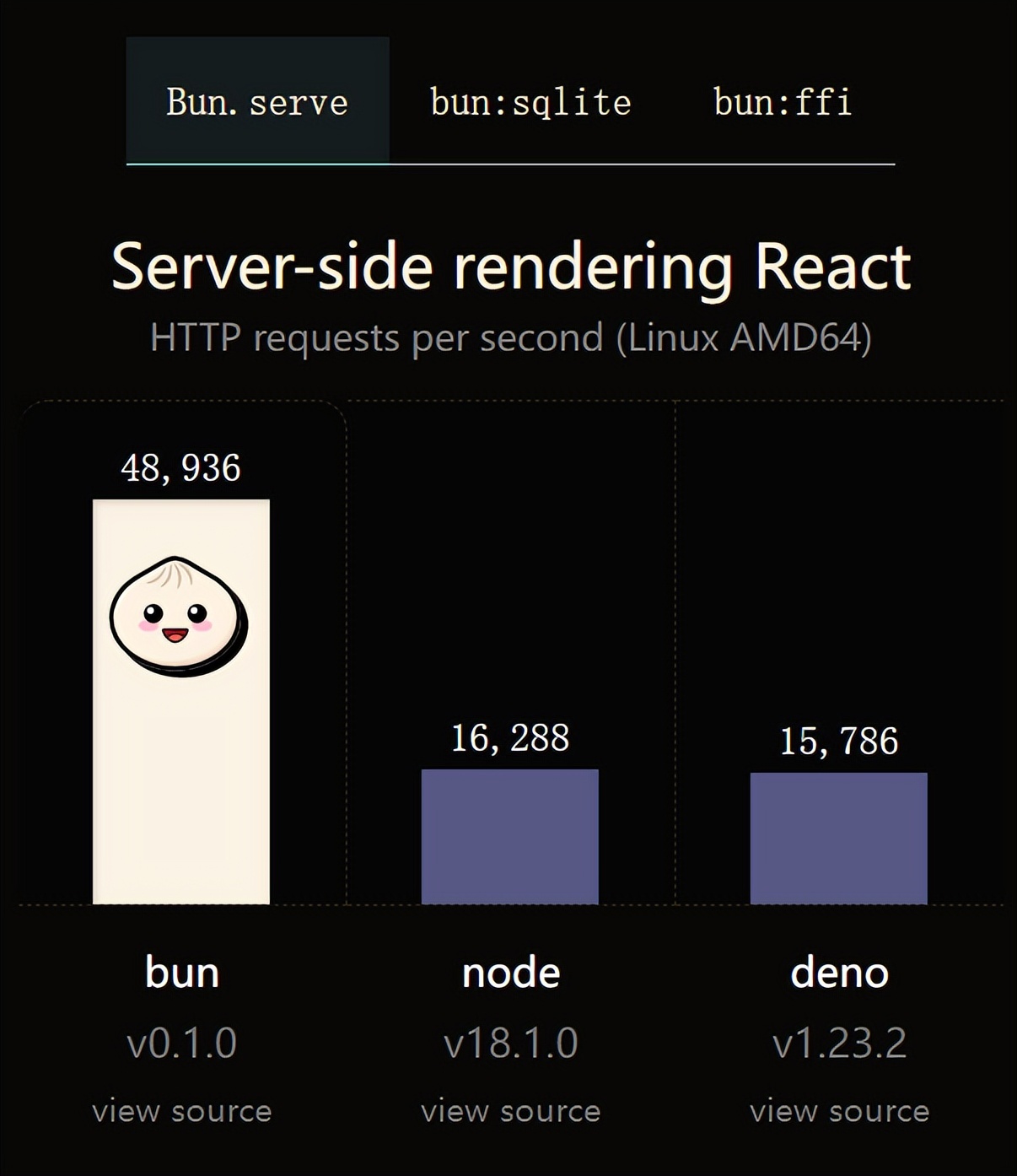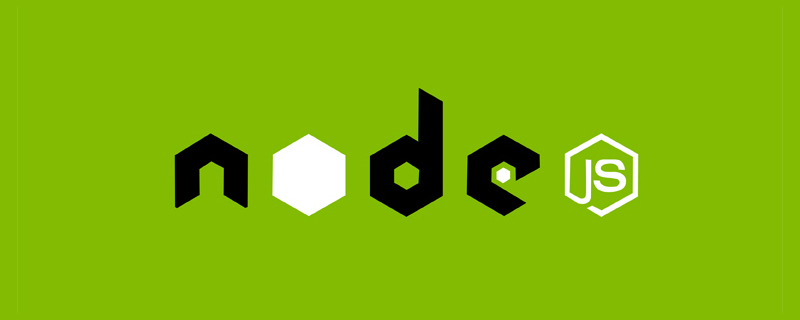This article will give you a detailed introduction to the common APIs of Nodejs Buffer module. It has certain reference value. Friends in need can refer to it. I hope it will be helpful to everyone.

Module Overview
Buffer is the core module of node. Developers can use it to process binary data, such as file streams. Reading and writing, processing of network request data, etc.
Buffer has many APIs. This article only selects the more commonly used/easy-to-understand APIs to explain, including the creation, comparison, connection, copy, search, traversal, type conversion, interception, encoding conversion, etc. of Buffer instances. [Recommended learning: "nodejs Tutorial"]
Create
- new Buffer(array)
- Buffer. alloc(length)
- Buffer.allocUnsafe(length)
- Buffer.from(array)
through new Buffer(array)
// Creates a new Buffer containing the ASCII bytes of the string 'buffer' const buf = new Buffer([0x62, 0x75, 0x66, 0x66, 0x65, 0x72]);
Verify:
var array = 'buffer'.split('').map(function(v){
return '0x' + v.charCodeAt(0).toString(16)
});
console.log( array.join() );
// 输出:0x62,0x75,0x66,0x66,0x65,0x72By Buffer.alloc(length)
var buf1 = Buffer.alloc(10); // 长度为10的buffer,初始值为0x0 var buf2 = Buffer.alloc(10, 1); // 长度为10的buffer,初始值为0x1
var buf3 = Buffer.allocUnsafe(10); // 长度为10的buffer,初始值不确定
var buf4 = Buffer.from([1, 2, 3]) // 长度为3的buffer,初始值为 0x01, 0x02, 0x03
By Buffer.from()
Example 1: Buffer.from(array)
// [0x62, 0x75, 0x66, 0x66, 0x65, 0x72] 为字符串 "buffer" // 0x62 为16进制,转成十进制就是 98,代表的就是字母 b var buf = Buffer.from([0x62, 0x75, 0x66, 0x66, 0x65, 0x72]); console.log(buf.toString());
Example 2: Buffer.from(string[, encoding])
Create a buffer through string and convert the buffer into characters When stringing, remember to keep the encoding consistent, otherwise garbled characters will appear, as shown below.
var buf = Buffer.from('this is a tést'); // 默认采用utf8 // 输出:this is a tést console.log(buf.toString()); // 默认编码是utf8,所以正常打印 // 输出:this is a tC)st console.log(buf.toString('ascii')); // 转成字符串时,编码不是utf8,所以乱码
The analysis of garbled characters is as follows:
var letter = 'é'; var buff = Buffer.from(letter); // 默认编码是utf8,这里占据两个字节 <Buffer c3 a9> var len = buff.length; // 2 var code = buff[0]; // 第一个字节为0xc3,即195:超出ascii的最大支持范围 var binary = code.toString(2); // 195的二进制:10101001 var finalBinary = binary.slice(1); // 将高位的1舍弃,变成:0101001 var finalCode = parseInt(finalBinary, 2); // 0101001 对应的十进制:67 var finalLetter = String.fromCharCode(finalCode); // 67对应的字符:C // 同理 0xa9最终转成的ascii字符为) // 所以,最终输出为 this is a tC)st
Example 3: Buffer.from(buffer)
Create a new Buffer instance and copy the buffer data to the new Go to the example.
var buff = Buffer.from('buffer'); var buff2 = Buffer.from(buff); console.log(buff.toString()); // 输出:buffer console.log(buff2.toString()); // 输出:buffer buff2[0] = 0x61; console.log(buff.toString()); // 输出:buffer console.log(buff2.toString()); // 输出:auffer
buffer comparison
buf.equals(otherBuffer)
Determine whether the data stored in two buffer instances are the same. If so, return true, otherwise return false.
// 例子一:编码一样,内容相同 var buf1 = Buffer.from('A'); var buf2 = Buffer.from('A'); console.log( buf1.equals(buf2) ); // true // 例子二:编码一样,内容不同 var buf3 = Buffer.from('A'); var buf4 = Buffer.from('B'); console.log( buf3.equals(buf4) ); // false // 例子三:编码不一样,内容相同 var buf5 = Buffer.from('ABC'); // <Buffer 41 42 43> var buf6 = Buffer.from('414243', 'hex'); console.log(buf5.equals(buf6)); //true //只要比较的两者内容相同,`buf.equals(otherBuffer)` 就返回true
buf.compare(target[, targetStart[, targetEnd[, sourceStart[, sourceEnd]]]])
also compares two buffer instances , the difference is:
You can specify the range of a specific comparison (specified through start and end)
The return value is an integer, and the standard buf, Target size relationship
Assume the return value is
-
0: buf and target are the same size. -
1: buf is greater than target, which means buf should be ranked after target. -
-1: buf is smaller than target, which means buf should be ranked before target.
Look at the example, the official example is pretty good, just post it:
const buf1 = Buffer.from('ABC'); const buf2 = Buffer.from('BCD'); const buf3 = Buffer.from('ABCD'); // Prints: 0 console.log(buf1.compare(buf1)); // Prints: -1 console.log(buf1.compare(buf2)); // Prints: -1 console.log(buf1.compare(buf3)); // Prints: 1 console.log(buf2.compare(buf1)); // Prints: 1 console.log(buf2.compare(buf3)); // Prints: [ <Buffer 41 42 43>, <Buffer 41 42 43 44>, <Buffer 42 43 44> ] // (This result is equal to: [buf1, buf3, buf2]) console.log([buf1, buf2, buf3].sort(Buffer.compare));
Buffer.compare(buf1, buf2)
Similar to buf.compare(target), it is generally used for sorting. Directly post the official example:
const buf1 = Buffer.from('1234'); const buf2 = Buffer.from('0123'); const arr = [buf1, buf2]; // Prints: [ <Buffer 30 31 32 33>, <Buffer 31 32 33 34> ] // (This result is equal to: [buf2, buf1]) console.log(arr.sort(Buffer.compare));
Let’s talk about Buffer.from([62])
Let’s study Buffer.from(array) a little here. The following is the description of the API from the official document, that is to say, each array element corresponds to 1 byte (8 bits), and the value ranges from 0 to 255.
Allocates a new Buffer using an array of octets.
The array elements are numbers
First look at it and pass it in elements for digital scene. The following are decimal, octal, and hexadecimal, which are consistent with the expected results.
var buff = Buffer.from([62]) // <Buffer 3e> // buff[0] === parseInt('3e', 16) === 62
var buff = Buffer.from([062]) // <Buffer 32> // buff[0] === parseInt(62, 8) === parseInt(32, 16) === 50
var buff = Buffer.from([0x62]) // <Buffer 62> // buff[0] === parseInt(62, 16) === 98
The array element is a string
Let’s look at the scenario where the incoming element is a string. A string starting with
0can be interpreted as 62 or 50 (octal) when parseInt('062') is used, as seen here The first explanation was adopted.Whether the string scenario has anything to do with parseInt() has not yet been explored in depth, just a guess. TODO (find time to study)
var buff = Buffer.from(['62']) // <Buffer 3e> // buff[0] === parseInt('3e', 16) === parseInt('62') === 62
var buff = Buffer.from(['062']) // <Buffer 3e> // buff[0] === parseInt('3e', 16) === parseInt('062') === 62
var buff = Buffer.from(['0x62']) // <Buffer 62> // buff[0] === parseInt('62', 16) === parseInt('0x62') === 98
The array element size exceeds 1 byte
Interested students can explore on their own.
var buff = Buffer.from([256]) // <Buffer 00>
Buffer.from('1')
At first, you will unconsciously Buffer.from('1')[0] is equal to "1". In fact, the corresponding code of "1" is 49.
var buff = Buffer.from('1') // <Buffer 31> console.log(buff[0] === 1) // false
By comparison, we will know that the code 1 is a control character, which means Start of Heading.
console.log( String.fromCharCode(49) ) // '1' console.log( String.fromCharCode(1) ) // '\u0001'
buffer connection: Buffer.concat(list[, totalLength])
Note: Personally, I think totalLength is quite redundant. According to the official documents, it is considered from the perspective of performance improvement. However, the internal implementation only traverses the list and accumulates length to obtain totalLength. From this point of view, performance optimization is almost negligible.
var buff1 = Buffer.alloc(10); var buff2 = Buffer.alloc(20); var totalLength = buff1.length + buff2.length; console.log(totalLength); // 30 var buff3 = Buffer.concat([buff1, buff2], totalLength); console.log(buff3.length); // 30
In addition to the performance optimization mentioned above, there are two other points to note in totalLength. Assume that the cumulative length of all buffers in the list is length
- totalLength > length:返回长度为totalLength的Buffer实例,超出长度的部分填充0。
- totalLength
var buff4 = Buffer.from([1, 2]); var buff5 = Buffer.from([3, 4]); var buff6 = Buffer.concat([buff4, buff5], 5); console.log(buff6.length); // console.log(buff6); // <Buffer 01 02 03 04 00> var buff7 = Buffer.concat([buff4, buff5], 3); console.log(buff7.length); // 3 console.log(buff7); // <Buffer 01 02 03>
拷贝:buf.copy(target[, targetStart[, sourceStart[, sourceEnd]]])
使用比较简单,如果忽略后面三个参数,那就是将buf的数据拷贝到target里去,如下所示:
var buff1 = Buffer.from([1, 2]); var buff2 = Buffer.alloc(2); buff1.copy(buff2); console.log(buff2); // <Buffer 01 02>
另外三个参数比较直观,直接看官方例子
const buf1 = Buffer.allocUnsafe(26);
const buf2 = Buffer.allocUnsafe(26).fill('!');
for (let i = 0 ; i < 26 ; i++) {
// 97 is the decimal ASCII value for 'a'
buf1[i] = i + 97;
}
buf1.copy(buf2, 8, 16, 20);
// Prints: !!!!!!!!qrst!!!!!!!!!!!!!
console.log(buf2.toString('ascii', 0, 25));查找:buf.indexOf(value[, byteOffset][, encoding])
跟数组的查找差不多,需要注意的是,value可能是String、Buffer、Integer中的任意类型。
- String:如果是字符串,那么encoding就是其对应的编码,默认是utf8。
- Buffer:如果是Buffer实例,那么会将value中的完整数据,跟buf进行对比。
- Integer:如果是数字,那么value会被当做无符号的8位整数,取值范围是0到255。
另外,可以通过byteOffset来指定起始查找位置。
直接上代码,官方例子妥妥的,耐心看完它基本就理解得差不多了。
const buf = Buffer.from('this is a buffer'); // Prints: 0 console.log(buf.indexOf('this')); // Prints: 2 console.log(buf.indexOf('is')); // Prints: 8 console.log(buf.indexOf(Buffer.from('a buffer'))); // Prints: 8 // (97 is the decimal ASCII value for 'a') console.log(buf.indexOf(97)); // Prints: -1 console.log(buf.indexOf(Buffer.from('a buffer example'))); // Prints: 8 console.log(buf.indexOf(Buffer.from('a buffer example').slice(0, 8))); const utf16Buffer = Buffer.from('\u039a\u0391\u03a3\u03a3\u0395', 'ucs2'); // Prints: 4 console.log(utf16Buffer.indexOf('\u03a3', 0, 'ucs2')); // Prints: 6 console.log(utf16Buffer.indexOf('\u03a3', -4, 'ucs2'));
写:buf.write(string[, offset[, length]][, encoding])
将sring写入buf实例,同时返回写入的字节数。
参数如下:
- string:写入的字符串。
- offset:从buf的第几位开始写入,默认是0。
- length:写入多少个字节,默认是 buf.length - offset。
- encoding:字符串的编码,默认是utf8。
看个简单例子
var buff = Buffer.alloc(4); buff.write('a'); // 返回 1 console.log(buff); // 打印 <Buffer 61 00 00 00> buff.write('ab'); // 返回 2 console.log(buff); // 打印 <Buffer 61 62 00 00>
填充:buf.fill(value[, offset[, end]][, encoding])
用value填充buf,常用于初始化buf。参数说明如下:
- value:用来填充的内容,可以是Buffer、String或Integer。
- offset:从第几位开始填充,默认是0。
- end:停止填充的位置,默认是 buf.length。
- encoding:如果
value是String,那么为value的编码,默认是utf8。
例子:
var buff = Buffer.alloc(20).fill('a'); console.log(buff.toString()); // aaaaaaaaaaaaaaaaaaaa
转成字符串: buf.toString([encoding[, start[, end]]])
把buf解码成字符串,用法比较直观,看例子
var buff = Buffer.from('hello'); console.log( buff.toString() ); // hello console.log( buff.toString('utf8', 0, 2) ); // he
转成JSON字符串:buf.toJSON()
var buff = Buffer.from('hello');
console.log( buff.toJSON() ); // { type: 'Buffer', data: [ 104, 101, 108, 108, 111 ] }遍历:buf.values()、buf.keys()、buf.entries()
用于对buf进行for...of遍历,直接看例子。
var buff = Buffer.from('abcde');
for(const key of buff.keys()){
console.log('key is %d', key);
}
// key is 0
// key is 1
// key is 2
// key is 3
// key is 4
for(const value of buff.values()){
console.log('value is %d', value);
}
// value is 97
// value is 98
// value is 99
// value is 100
// value is 101
for(const pair of buff.entries()){
console.log('buff[%d] === %d', pair[0], pair[1]);
}
// buff[0] === 97
// buff[1] === 98
// buff[2] === 99
// buff[3] === 100
// buff[4] === 101截取:buf.slice([start[, end]])
用于截取buf,并返回一个新的Buffer实例。需要注意的是,这里返回的Buffer实例,指向的仍然是buf的内存地址,所以对新Buffer实例的修改,也会影响到buf。
var buff1 = Buffer.from('abcde'); console.log(buff1); // <Buffer 61 62 63 64 65> var buff2 = buff1.slice(); console.log(buff2); // <Buffer 61 62 63 64 65> var buff3 = buff1.slice(1, 3); console.log(buff3); // <Buffer 62 63> buff3[0] = 97; // parseInt(61, 16) ==> 97 console.log(buff1); // <Buffer 62 63>
TODO
创建、拷贝、截取、转换、查找
buffer、arraybuffer、dataview、typedarray
buffer vs 编码
Buffer.from()、Buffer.alloc()、Buffer.alocUnsafe()
Buffer vs TypedArray
文档摘要
关于buffer内存空间的动态分配
Instances of the Buffer class are similar to arrays of integers but correspond to fixed-sized, raw memory allocations outside the V8 heap. The size of the Buffer is established when it is created and cannot be resized.
相关链接
unicode对照表 https://unicode-table.com/cn/#control-character
字符编码笔记:ASCII,Unicode和UTF-8 http://www.ruanyifeng.com/blog/2007/10/ascii_unicode_and_utf-8.html
更多编程相关知识,请访问:编程视频!!
The above is the detailed content of Detailed explanation of common APIs of Nodejs Buffer module. For more information, please follow other related articles on the PHP Chinese website!
 Vercel是什么?怎么部署Node服务?May 07, 2022 pm 09:34 PM
Vercel是什么?怎么部署Node服务?May 07, 2022 pm 09:34 PMVercel是什么?本篇文章带大家了解一下Vercel,并介绍一下在Vercel中部署 Node 服务的方法,希望对大家有所帮助!
 node.js gm是什么Jul 12, 2022 pm 06:28 PM
node.js gm是什么Jul 12, 2022 pm 06:28 PMgm是基于node.js的图片处理插件,它封装了图片处理工具GraphicsMagick(GM)和ImageMagick(IM),可使用spawn的方式调用。gm插件不是node默认安装的,需执行“npm install gm -S”进行安装才可使用。
 火了!新的JavaScript运行时:Bun,性能完爆NodeJul 15, 2022 pm 02:03 PM
火了!新的JavaScript运行时:Bun,性能完爆NodeJul 15, 2022 pm 02:03 PM今天跟大家介绍一个最新开源的 javaScript 运行时:Bun.js。比 Node.js 快三倍,新 JavaScript 运行时 Bun 火了!
 聊聊Node.js中的多进程和多线程Jul 25, 2022 pm 07:45 PM
聊聊Node.js中的多进程和多线程Jul 25, 2022 pm 07:45 PM大家都知道 Node.js 是单线程的,却不知它也提供了多进(线)程模块来加速处理一些特殊任务,本文便带领大家了解下 Node.js 的多进(线)程,希望对大家有所帮助!
 nodejs中lts是什么意思Jun 29, 2022 pm 03:30 PM
nodejs中lts是什么意思Jun 29, 2022 pm 03:30 PM在nodejs中,lts是长期支持的意思,是“Long Time Support”的缩写;Node有奇数版本和偶数版本两条发布流程线,当一个奇数版本发布后,最近的一个偶数版本会立即进入LTS维护计划,一直持续18个月,在之后会有12个月的延长维护期,lts期间可以支持“bug fix”变更。
 node爬取数据实例:聊聊怎么抓取小说章节May 02, 2022 am 10:00 AM
node爬取数据实例:聊聊怎么抓取小说章节May 02, 2022 am 10:00 AMnode怎么爬取数据?下面本篇文章给大家分享一个node爬虫实例,聊聊利用node抓取小说章节的方法,希望对大家有所帮助!


Hot AI Tools

Undresser.AI Undress
AI-powered app for creating realistic nude photos

AI Clothes Remover
Online AI tool for removing clothes from photos.

Undress AI Tool
Undress images for free

Clothoff.io
AI clothes remover

AI Hentai Generator
Generate AI Hentai for free.

Hot Article

Hot Tools

EditPlus Chinese cracked version
Small size, syntax highlighting, does not support code prompt function

MantisBT
Mantis is an easy-to-deploy web-based defect tracking tool designed to aid in product defect tracking. It requires PHP, MySQL and a web server. Check out our demo and hosting services.

Safe Exam Browser
Safe Exam Browser is a secure browser environment for taking online exams securely. This software turns any computer into a secure workstation. It controls access to any utility and prevents students from using unauthorized resources.

Dreamweaver CS6
Visual web development tools

PhpStorm Mac version
The latest (2018.2.1) professional PHP integrated development tool









